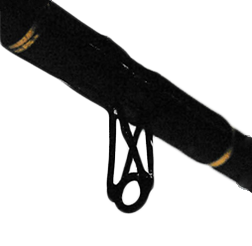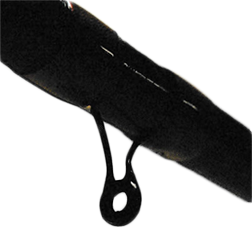"Casting, controlling the tackle, striking and playing fish are the basic functions which a float rod must do well. This part should help you to choose the right rod."
Since carbon fibre replaced glass-fibre as the main rod building material, the choice of float rods has grown dramatically.
Each season, manufacturers are adding new models to the vast range - each with their own advantages and disadvantages.
The action, lightness and feel of a rod depend on the materials it's made of split cane, greenheart, Spanish reed and glass fibre have all been used to build rods but materials like carbon fibre and Kevlar have made them obsolete.
Some carbon fibre float rods include Kevlar in their construction. Kevlar-a combination of polymers and nylon - is a non-stretch, shock-absorbent material used for making bullet-proof vests and lumberjacks' trousers (as protection against the chainsaw). Braided around a carbon fibre core, it increases torsional strength (good for accurate long-distance casting) and makes for a crisper action.
Choose the rod to suit the kind of fishing you think you'll be doing. If you expect to float fish for powerful species like tench or small carp, go for a more powerful rod.
Anew action: Recently the trend has been towards a rod having a 'hybrid' action. When light pressure is applied to the tip of these rods they behave as if they had a tip action - making them suitable for Stick Float work. As more pressure is applied to the tip, the middle and even the butt sections come into play, so that the rod is quite capable of Waggler work, and able to handle larger fish too.
Ceramic linings are heavier and not as hard as silicon carbide linings, but they tend to be more durable and are only a third of the price.
Hard Chrome Ring

Hard chrome are good for trotting rods, where it is important to keep friction very low, but they need changing every season
Lined Ring

Lined rings are more wear resistant but not quite as smooth as chrome.
A Float Rod should not be thought of simply as a 'stick' with which to cast the Float out and bring fish in.